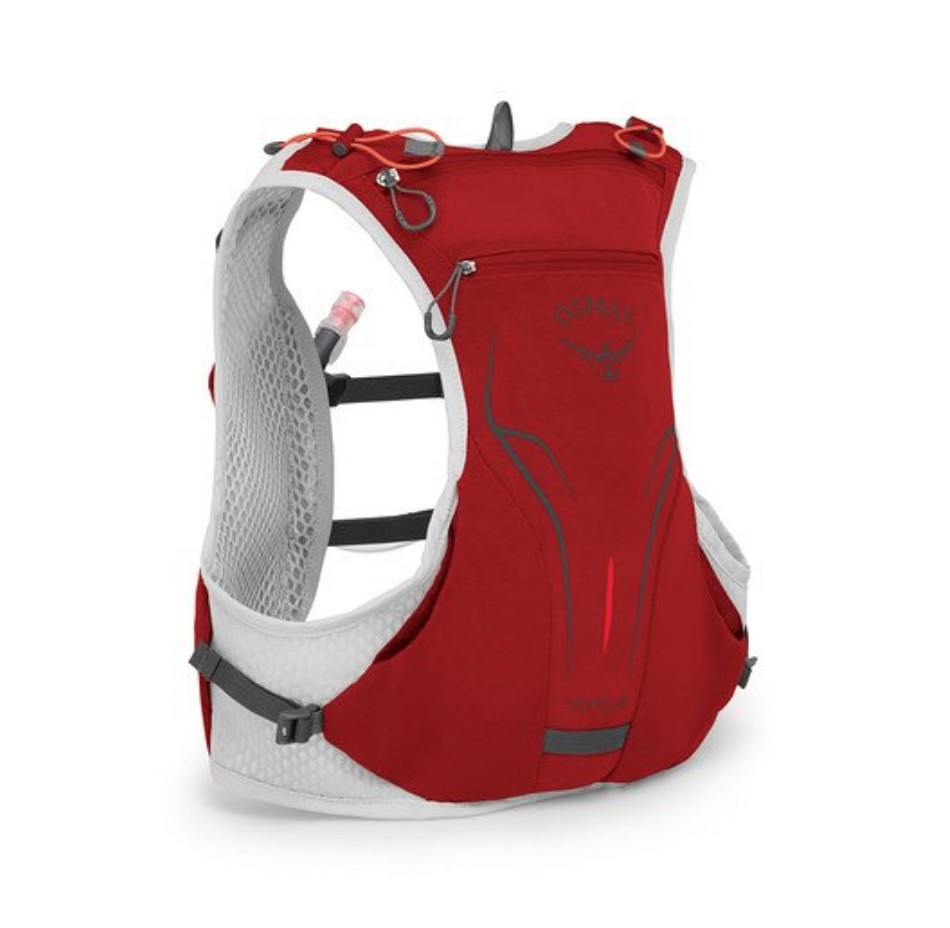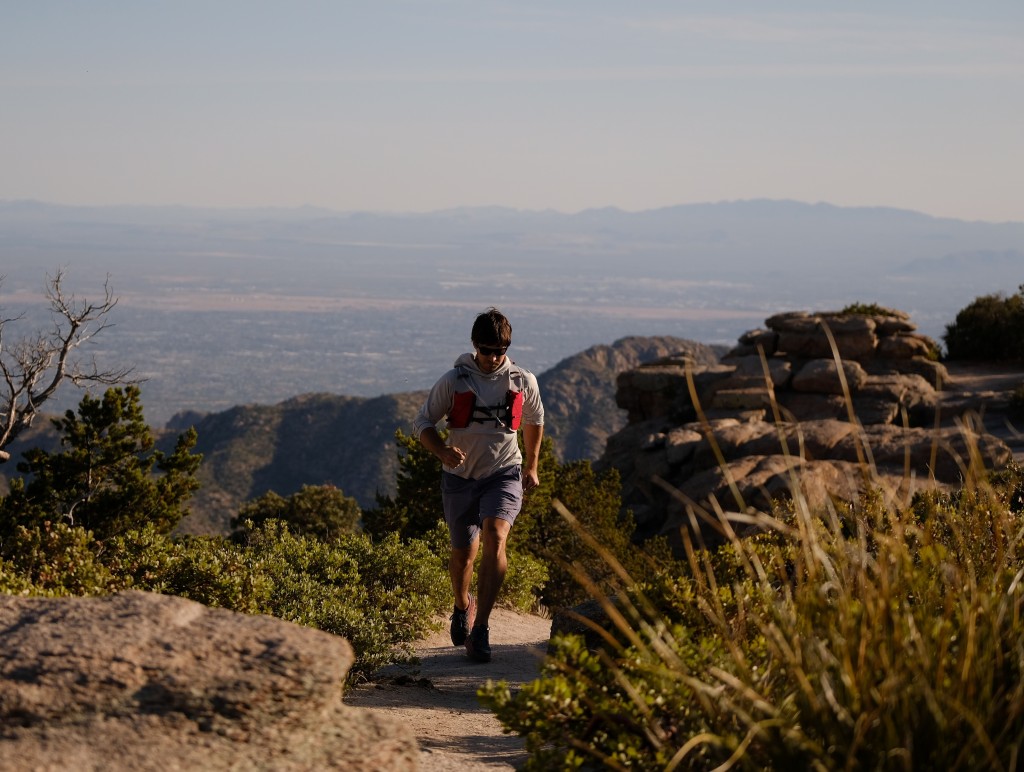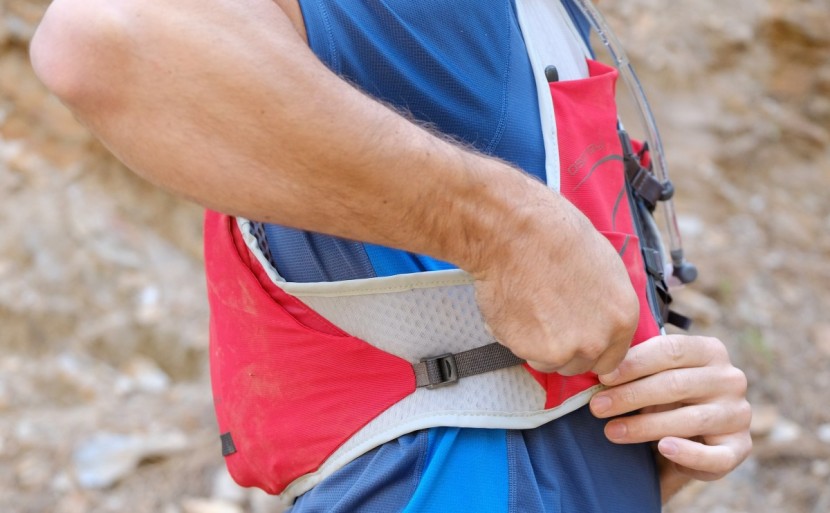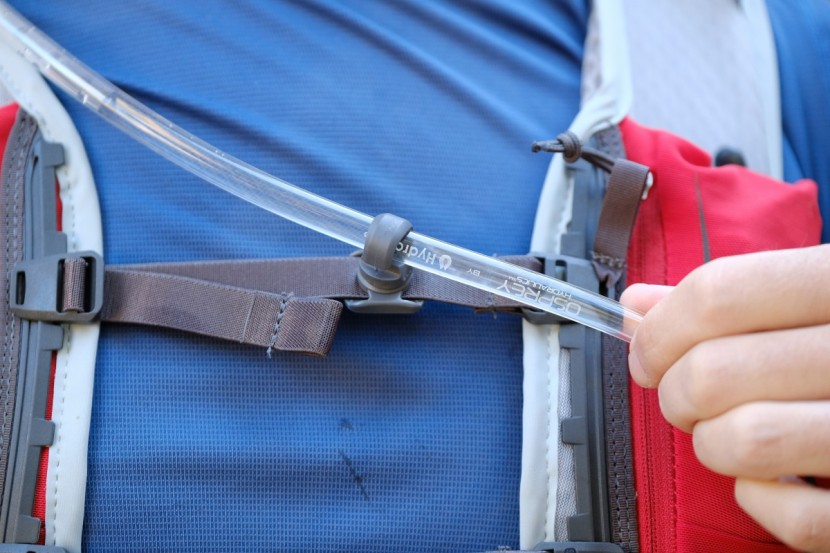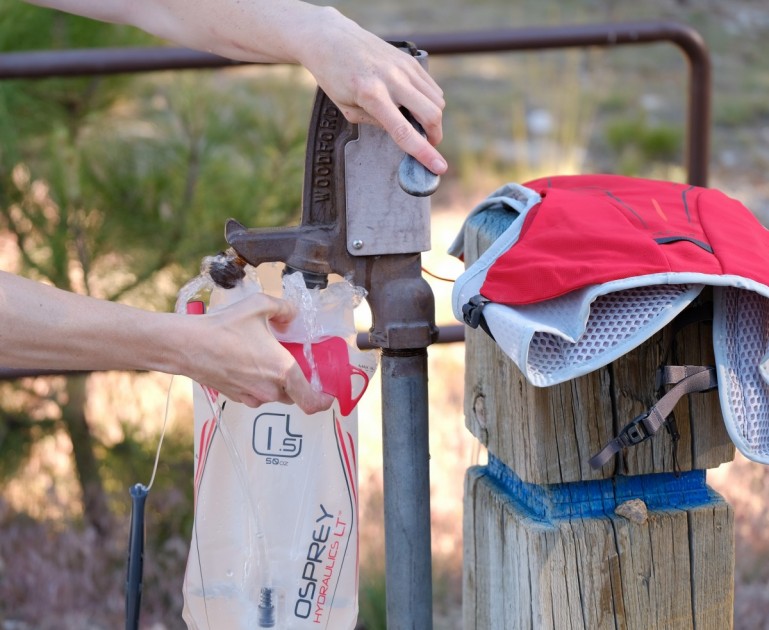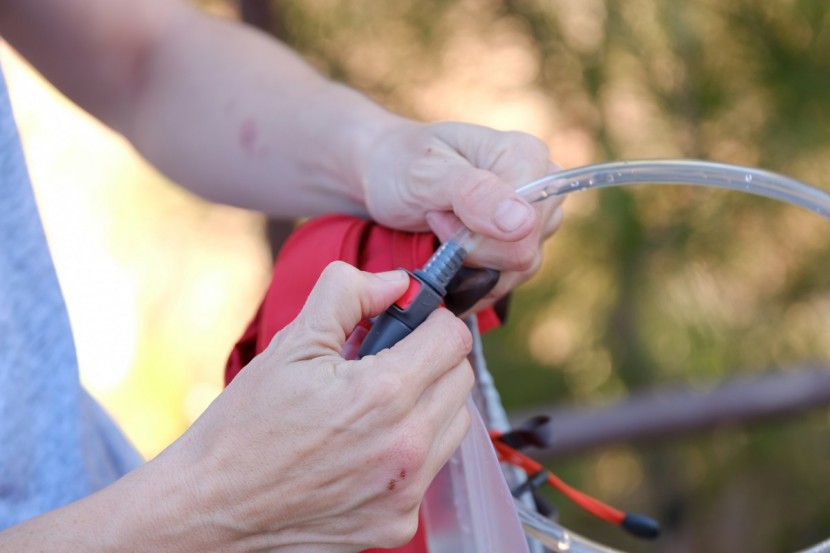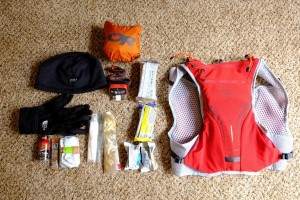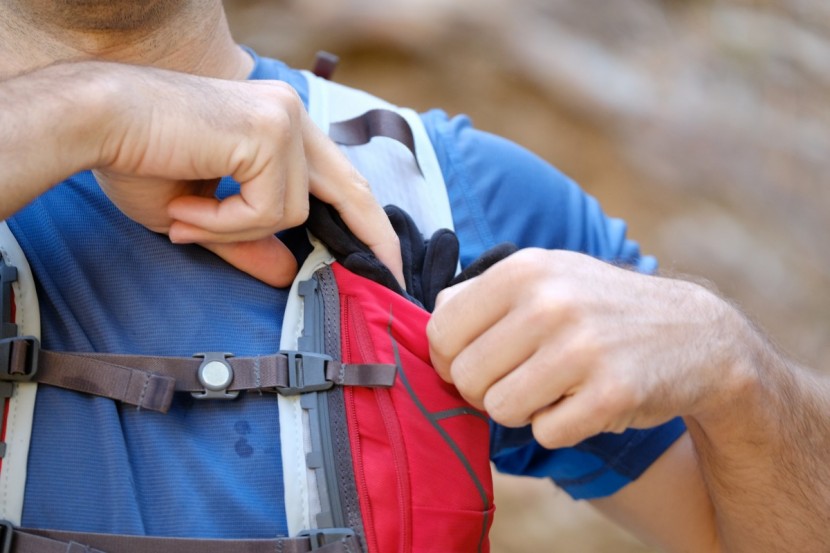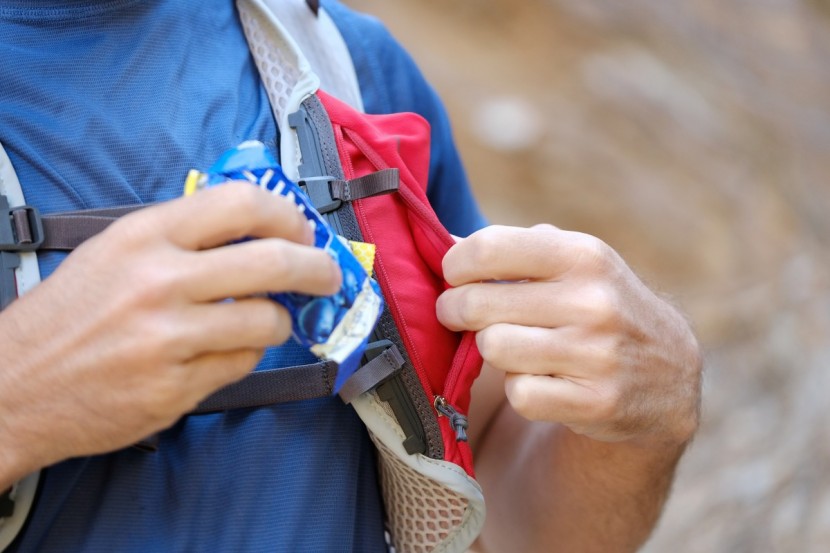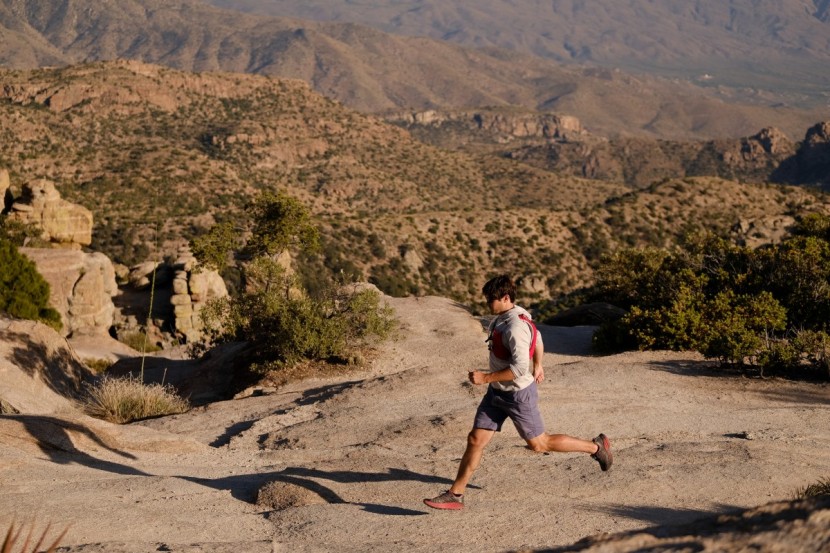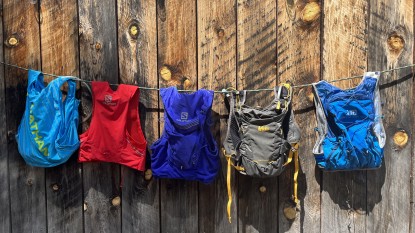Osprey Duro 1.5 Review
Our Verdict
Our Analysis and Test Results
There are quite a few components to the Duro that we enjoyed. This is the most affordable running vest to offer a magnetic sternum clip for the hydration hose and has several zippered pockets.
Performance Comparison
Comfort
The Duro is form-fitting, breathable, and has fantastically easy-to-adjust sternum and side straps. The mesh material that forms the entire structure of the vest is soft and has enough structure to keep air moving in-between your body and the pack. Our biggest struggle regarding comfort is the single adjustable strap on each flank. When compared side to side with other more comfy options, you can see some critical differences. We prefer a V-strap design that creates pull both on your up and down stride, whereas the straight across strap of this pack doesn't. The end result is feeling a significant amount of bounce that we didn't experience with other products.
On the other hand, the comfort/fit highlight of the Duro is its sternum straps. The shark-bite-esque clips snap on and off of the rail, giving you seriously quick adjustment. While these attachment points look like they might detach on their own under pressure, they don't — you have to pull out in order to unclip.
Features
The Duro has a few features that other vests at a similar price-point don't include. In fact, the Duro is the least expensive vest to offer a magnetic hose clip to keep everything neat and tidy. We found this clip to be easy to use and handy in rugged terrain as we didn't have to look at the clip to reattach the hose after taking a drink.
There are also far more zippered compartments on this pack than other entry-level packs we tested, making the organization of smaller items a bit easier. Still, overall storage suffers as many of the pockets share the same space as other pockets. The Duro is mostly slimmed down to the essentials and doesn't provide many of the features you get with the more refined running vests.
Hydration System
While the front stretch pockets look like they might fit non-Osprey brand soft flasks, they don't — at least not easily. We tried to stuff multiple different types of soft flasks into the pockets to no avail. If you want to utilize the expandable water carrying capacity, the proprietary soft flasks are a must.
We also struggled to fill the hydration reservoir of the Duro as the handle is positioned in a way that keeps you from holding the top open. This isn't too much of an issue until you come across a spigot that requires one of your hands to operate it. This might seem quite picky, but if you're filtering water into your bladder, you might find yourself running out of hands.
The reservoir hydration system on the Duro has two quick-release clamps in the system. This makes removing the bladder from the pack quite easy and allowed us to keep the hose threaded through the pack. The ease of removal is definitely a highlight of this hydration pack, and we wish other packs had this feature as it streamlines the process.
Volume to Weight Ratio
The Duro offers a ton of organization potential with its numerous zippered pockets but overall lacks the necessary storage for bigger days out on the trail. At 15.8 ounces, it is among the heaviest vests we tested, while carrying the least amount of gear. For our volume to weight ratio equation, the Duro scores alongside the women's Dyna at the very bottom of the field. As with all packs we tested, we put our base kit together with basic items and crammed it into the Duro to see if we had any room to spare — and this just about maxed out the bag. While there isn't a lot of space for more than this, we could typically get out for about half a day with this amount of food and supplies given decent weather and not needing any other layers.
Pockets
The Duro has a ton of zippered pockets. While this is a huge plus in being able to keep small items organized, it's almost too much. The zippered pockets on the front of the vest share the same space as the large stuff pouches. Ultimately, if you have something voluminous stuffed into the pouches, it makes the zippered pockets almost impossible to use since they share the same area.
Value
This pack is a good deal. Had the Circuit never been invented, the Duro would likely be our Best Buy Winner. That being said, there are a few things that could be improved to increase the efficiency and weight of this pack. Overall, though, it performed well in our tests, especially for the price.
Conclusion
The Duro is a solid entry-level running vest to get you out on the trails. It is affordable and effective even though it doesn't perform quite as well as others in its price range. As we could fit our basic kit along with half a day's food, this vest should be at home on trail runs and in urban environments alike.


